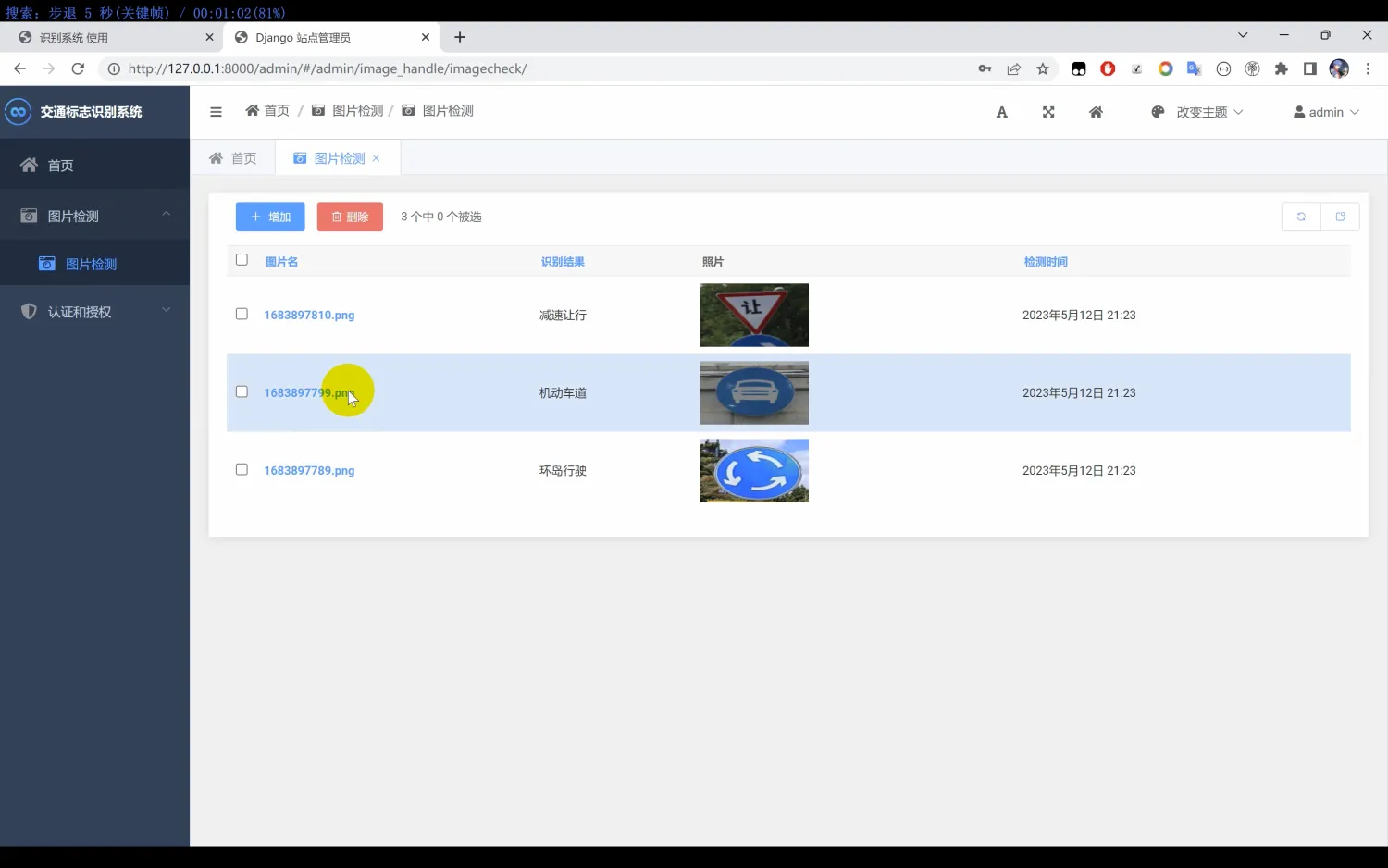多态的定义
多态是⼀个继承关系的下的类对象,去调⽤同⼀函数,产⽣了不同的⾏为
⽐如Student继承了Person。Person对象买票全价,Student对象优惠买票。
多态实现的条件
• 必须指针或者引⽤调⽤虚函数
第⼀必须是基类的指针或引⽤,因为只有基类的指针或引⽤才能既指向派⽣类对象;
• 被调⽤的函数必须是虚函数第⼆派⽣类必须对基类的虚函数重写/覆盖,重写或者覆盖了,派⽣类才能有不同的函数,多
态的不同形态效果才能达到

虚函数
类成员函数前⾯加virtual修饰,那么这个成员函数被称为虚函数。注意⾮成员函数不能加virtual修饰
class Person
{
public:
virtual void BuyTicket() { cout << "买票-全价" << endl;}
};虚函数的重写/覆盖
虚函数的重写/覆盖:派⽣类中有⼀个跟基类完全相同的虚函数(即派⽣类虚函数与基类虚函数的返回值类型、函数名字、参数列表完全相同),称派⽣类的虚函数重写了基类的虚函数
注意:在重写基类虚函数时,派⽣类的虚函数在不加virtual关键字时,虽然也可以构成重写(因为继承后基类的虚函数被继承下来了在派⽣类依旧保持虚函数属性),但是该种写法不是很规范,不建议这样使⽤
#define _CRT_SECURE_NO_WARNINGS 1
#include<iostream>
using namespace std;
class Person {
public:
virtual void BuyTicket() { cout << "买票-全价" << endl; }
};
class Student : public Person {
public:
virtual void BuyTicket() { cout << "买票-打折" << endl; }
};
void Func(Person* ptr)
{
// 这⾥可以看到虽然都是Person指针Ptr在调⽤BuyTicket
// 但是跟ptr没关系,⽽是由ptr指向的对象决定的。
ptr->BuyTicket();
}
int main()
{
Person ps;
Student st;
Func(&ps);
Func(&st);
return 0;
}
#define _CRT_SECURE_NO_WARNINGS 1
#include<iostream>
using namespace std;
class Animal
{
public :
virtual void talk() const
{}
};
class Dog : public Animal
{
public :
virtual void talk() const
{
std::cout << "汪汪" << std::endl;
}
};
class Cat : public Animal
{
public :
virtual void talk() const
{
std::cout << "(>^ω^<)喵" << std::endl;
}
};
void letsHear(const Animal& animal)
{
animal.talk();
} int main()
{
Cat cat;
Dog dog;
letsHear(cat);
letsHear(dog);
return 0;
}
以下程序输出结果是什么()
A:A->0 B:B->1 C:A->1 D:B->0 E:编译出错 F:以上都不正确
#define _CRT_SECURE_NO_WARNINGS 1
#include<iostream>
using namespace std;
class A
{
public:
virtual void func(int val = 1) { std::cout << "A->" << val << std::endl; }
virtual void test() { func(); }
};
class B : public A
{
public:
void func(int val = 0) { std::cout << "B->" << val << std::endl; }
};
int main(int argc, char* argv[])
{
B* p = new B;
p->test();
p->func();
return 0;
}

B类型的指针,去B类里面查找test()函数,由于test()只在A类中存在,故去A类中,由于继承但是并不是将A类中的函数拷贝了一份,故调用的是A的指针,this->func(),由于满足多态,故根据对象为B,去B类里面找------由于多态构成重写,不同的对象调用不同的函数,由于多态重写,A的声明加上B的函数体(基类的声明部分+派生类的函数体部分)
第二个p->func(),不构成重写,因为此时为派生类的指针,不满足重写,故不是多态
虚函数重写的⼀些其他问题
协变(了解)
派⽣类重写基类虚函数时,与基类虚函数返回值类型不同。即基类虚函数返回基类对象的指针或者引⽤,派⽣类虚函数返回派⽣类对象的指针或者引⽤时,称为协变
#define _CRT_SECURE_NO_WARNINGS 1
#include<iostream>
using namespace std;
class A {};
class B : public A {};
class Person {
public:
virtual A* BuyTicket()
{
cout << "买票-全价" << endl;
return nullptr;
}
};
class Student : public Person {
public:
virtual B* BuyTicket()
{
cout << "买票-打折" << endl;
return nullptr;
}
};
void Func(Person* ptr)
{
ptr->BuyTicket();
} int main()
{
Person ps;
Student st;
Func(&ps);
Func(&st);
return 0;
}
析构函数的重写
基类的析构函数为虚函数,此时派⽣类析构函数只要定义,⽆论是否加virtual关键字,都与基类的析构函数构成重写,虽然基类与派⽣类析构函数名字不同看起来不符合重写的规则,实际上编译器对析构函数的名称做了特殊处理,编译后析构函数的名称统⼀处理成destructor,所以基类的析构函数加了vialtual修饰,派⽣类的析构函数就构成重写。
下⾯的代码我们可以看到,如果~A(),不加virtual,那么deletep2时只调⽤的A的析构函数,没有调⽤B的析构函数,就会导致内存泄漏问题,因为~B()中在释放资源。
#define _CRT_SECURE_NO_WARNINGS 1
#include<iostream>
using namespace std;
class A
{
public :
virtual ~A()
{
cout << "~A()" << endl;
}
};
class B : public A {
public:
~B()
{
cout << "~B()->delete:" << _p << endl;
delete _p;
}
protected:
int* _p = new int[10];
};
// 只有派⽣类Student的析构函数重写了Person的析构函数,下⾯的delete对象调⽤析构函数,
// 才能构成多态,才能保证p1和p2指向的对象正确的调⽤析构函数。
int main()
{
A* p1 = new A;
A* p2 = new B;
delete p1;
delete p2;
return 0;
}override和final关键字
C++对函数重写的要求⽐较严格,但是有些情况下由于疏忽,⽐如函数名写错参数写错等导致⽆法构成重载,⽽这种错误在编译期间是不会报出的,只有在程序运⾏时没有得到预期结果才来debug会得不偿失,因此C++11提供了override,可以帮助⽤⼾检测是否重写。如果我们不想让派⽣类重写这个虚函数,那么可以⽤final去修饰。
#define _CRT_SECURE_NO_WARNINGS 1
#include<iostream>
using namespace std;
// error C3668: “Benz::Drive”: 包含重写说明符“override”的⽅法没有重写任何基类⽅法
class Car {
public:
virtual void Dirve()
{}
};
class Benz :public Car {
public:
virtual void Drive() override { cout << "Benz-舒适" << endl; }
};
int main()
{
return 0;
}
// error C3248: “Car::Drive”: 声明为“final”的函数⽆法被“Benz::Drive”重写
class Car
{
public :
virtual void Drive() final {}
};
class Benz :public Car
{
public :
virtual void Drive() { cout << "Benz-舒适" << endl; }
};
int main()
{
return 0;
}
纯虚函数和抽象类
在虚函数的后⾯写上=0,则这个函数为纯虚函数,纯虚函数不需要定义实现(实现没啥意义因为要被派⽣类重写,但是语法上可以实现),只要声明即可。包含纯虚函数的类叫做抽象类,抽象类不能实例化出对象,如果派⽣类继承后不重写纯虚函数,那么派⽣类也是抽象类。纯虚函数某种程度上强制了派⽣类重写虚函数,因为不重写实例化不出对象
#define _CRT_SECURE_NO_WARNINGS 1
#include<iostream>
using namespace std;
class Car
{
public :
virtual void Drive() = 0;
};
class Benz :public Car
{
public :
virtual void Drive()
{
cout << "Benz-舒适" << endl;
}
};
class BMW : public Car
{
public :
virtual void Drive()
{
cout << "BMW-操控" << endl;
}
};
int main()
{
// 编译报错:error C2259: “Car”: ⽆法实例化抽象类
Car car;
Car* pBenz = new Benz;
pBenz->Drive();
Car* pBMW = new BMW;
pBMW->Drive();
return 0;
}虚函数表指针
下⾯编译为32位程序的运⾏结果是什么()
A.编译报错B.运⾏报错C.8D.12
#define _CRT_SECURE_NO_WARNINGS 1
#include<iostream>
using namespace std;
class Base
{
public :
virtual void Func1()
{
cout << "Func1()" << endl;
}
protected:
int _b = 1;
char _ch = 'x';
};
int main()
{
Base b;
cout << sizeof(b) << endl;
return 0;
}
除了_b和_ch成员,还多⼀个__vfptr放在对象的前⾯(注意有些平台可能会放到对象的最后⾯,这个跟平台有关),对象中的这个指针我们叫做虚函数表指针(v代表virtual,f代表function)。⼀个含有虚函数的类中都⾄少都有⼀个虚函数表指针,因为⼀个类所有虚函数的地址要被放到这个类对象的虚函数表中,虚函数表也简称虚表

多态的原理
多态是如何实现的
从底层的⻆度Func函数中ptr->BuyTicket(),是如何作为ptr指向Person对象调⽤Person::BuyTicket,ptr指向Student对象调⽤Student::BuyTicket的呢?通过下图我们可以看到,满⾜多态条件后,底层不再是编译时通过调⽤对象确定函数的地址,⽽是运⾏时到指向的对象的虚表中确定对应的虚函数的地址,这样就实现了指针或引⽤指向基类就调⽤基类的虚函数,指向派⽣类就调⽤派⽣类对应的虚函数。第⼀张图,ptr指向的Person对象,调⽤的是Person的虚函数;第⼆张图,ptr指向的Student对象,调⽤的是Student的虚函数



#define _CRT_SECURE_NO_WARNINGS 1
#include<iostream>
using namespace std;
class Person {
public:
virtual void BuyTicket() { cout << "买票-全价" << endl; }
};
class Student : public Person {
public:
virtual void BuyTicket() { cout << "买票-打折" << endl; }
};
class Soldier : public Person {
public:
virtual void BuyTicket() { cout << "买票-优先" << endl; }
};
void Func(Person* ptr)
{
// 这⾥可以看到虽然都是Person指针Ptr在调⽤BuyTicket
// 但是跟ptr没关系,⽽是由ptr指向的对象决定的。
ptr->BuyTicket();
} int main()
{
// 其次多态不仅仅发⽣在派⽣类对象之间,多个派⽣类继承基类,重写虚函数后
// 多态也会发⽣在多个派⽣类之间。
Person ps;
Student st;
Soldier sr;
Func(&ps);
Func(&st);
Func(&sr);
return 0;
}
虚函数表
• 基类对象的虚函数表中存放基类所有虚函数的地址。
• 派⽣类由两部分构成,继承下来的基类和⾃⼰的成员,⼀般情况下,继承下来的基类中有虚函数表
指针,⾃⼰就不会再⽣成虚函数表指针。但是要注意的这⾥继承下来的基类部分虚函数表指针和基类对象的虚函数表指针不是同⼀个,就像基类对象的成员和派⽣类对象中的基类对象成员也独⽴的。
• 派⽣类中重写的基类的虚函数,派⽣类的虚函数表中对应的虚函数就会被覆盖成派⽣类重写的虚函数地址。
• 派⽣类的虚函数表中包含,基类的虚函数地址,派⽣类重写的虚函数地址,派⽣类⾃⼰的虚函数地址三个部分。
• 虚函数表本质是⼀个存虚函数指针的指针数组,⼀般情况这个数组最后⾯放了⼀个0x00000000标记。(这个C++并没有进⾏规定,各个编译器⾃⾏定义的,vs系列编译器会再后⾯放个0x00000000标记,g++系列编译不会放)
• 虚函数存在哪的?虚函数和普通函数⼀样的,编译好后是⼀段指令,都是存在代码段的,只是虚函数的地址⼜存到了虚表中。
• 虚函数表存在哪的?这个问题严格说并没有标准答案C++标准并没有规定,我们写下⾯的代码可以对⽐验证⼀下。vs下是存在代码段(常量区)


#define _CRT_SECURE_NO_WARNINGS 1
#include<iostream>
using namespace std;
class Base {
public:
virtual void func1() { cout << "Base::func1" << endl; }
virtual void func2() { cout << "Base::func2" << endl; }
void func5() { cout << "Base::func5" << endl; }
protected:
int a = 1;
};
class Derive : public Base
{
public :
// 重写基类的func1
virtual void func1() { cout << "Derive::func1" << endl; }
virtual void func3() { cout << "Derive::func1" << endl; }
void func4() { cout << "Derive::func4" << endl; }
protected:
int b = 2;
};
int main()
{
Base b;
Derive d;
return 0;
}
int main()
{
int i = 0;
static int j = 1;
int* p1 = new int;
const char* p2 = "xxxxxxxx";
printf("栈:%p\n", &i);
printf("静态区:%p\n", &j);
printf("堆:%p\n", p1);
printf("常量区:%p\n", p2);
Base b;
Derive d;
Base* p3 = &b;
Derive* p4 = &d;
printf("Person虚表地址:%p\n", *(int*)p3);
printf("Student虚表地址:%p\n", *(int*)p4);
printf("虚函数地址:%p\n", &Base::func1);
printf("普通函数地址:%p\n", &Base::func5);
return 0;
}
//运⾏结果:
//栈 : 010FF954
//静态区 : 0071D000
//堆 : 0126D740
//常量区 : 0071ABA4
//Person虚表地址 : 0071AB44
//Student虚表地址 : 0071AB84
//虚函数地址 : 00711488
//普通函数地址 : 007114BF


















